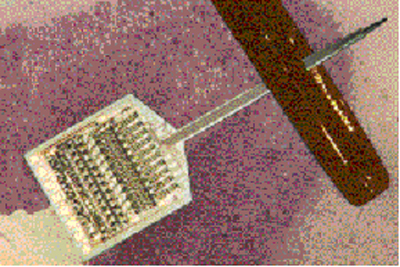EECS 421: Properties of Transistors
Instructor: Professor Elaheh Ahmadi
Coverage
Semiconductor transistors are the basis of all modern information processing technologies. In this course we will understand the physics and technology behind transistors. We will start by understanding bandstructure, transport and heterostructure physics. Then we will examine p-n diodes which form the basis of bipolar devices that will be studied later on in the course. The course will focus on field effect transistors (Junction field effect transistors or JFETs; metal semiconductor field effect transistors or MESFETs; heterojuction field effect transistors or HFETs and metal oxide field effect transistors or MOSFETs). We will examine how these devices function and how we can optimize them for speed, power and gain
Textbook(s)
Mishra, Umesh, and Jasprit Singh. Semiconductor Device Physics and Design (Series on Integrated Circuits and Systems). 1 ed. New York: Springer, 2007.
Syllabus
- Crystal Structures
- Electrons in Semiconductors; important material systems
- Heterostructure Physics
- Transport process: mobility, velocity field relations
- Transport process: diffusion
- Technology Issues in semiconductor device fabrication
- P-n diodes: static and time-dependent behavior
- Bipolar devices: BJTs and HBTs; static and time-dependent behavior
- Field Effect Transistors: JFET, MESFET and HFET
- Field Effect Transistors: MOSFETs
- Challenges in devices design
- Future of semiconductor devices




 MENU
MENU 
